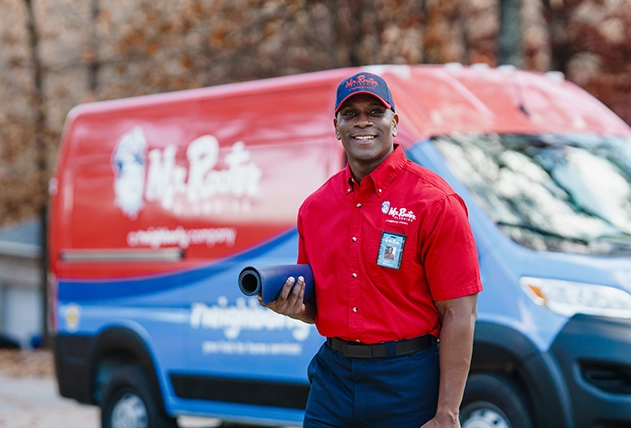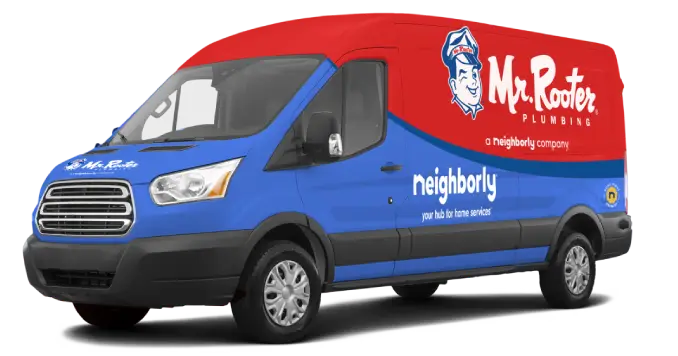Choosing the right plunger type in Coeur d'Alene depends on whether you need to clear sink drains, toilet clogs, or bathtub blockages. Each plunger design creates different seal strengths and works best on specific drain shapes found in Coeur d'Alene homes.
Using the wrong plunger wastes time and often fails to remove clogs. Understanding which tool matches each drain type helps homeowners clear blockages quickly without causing fixture damage.
Three Main Plunger Types for Coeur d'Alene Homes
Cup Plungers for Flat Surface Drains
Cup plungers feature a simple rubber cup connected to a wooden or plastic handle. The flat-bottomed cup works best on flat drain surfaces found in sinks, bathtubs, and shower floors.
This design creates a tight seal over flat drains to generate vacuum pressure. Coeur d'Alene homeowners commonly use cup plungers for kitchen and bathroom sinks where drains sit flush with surfaces.
The rubber cup needs to lie completely flat to form an effective seal. Curved toilet bowls prevent proper sealing, making cup plungers ineffective for toilet clogs.
Flange Plungers for Toilet Drains
Flange plungers have a soft rubber flap that extends from inside the cup. This flange fits directly into toilet drain openings to create superior sealing compared to flat cups.
The extended flange narrows to match toilet drain diameters ranging from 3 to 4 inches. Longer handles on flange plungers provide better leverage for clearing deep toilet blockages.
These plungers work on sinks by tucking the flange inside the cup. This versatility makes flange plungers useful for multiple applications with proper cleaning between uses.
Accordion Plungers for Tough Clogs
Accordion plungers use hard plastic construction with multiple folding layers. The accordion design creates stronger pressure than rubber plungers when compressed properly.
These plungers generate more force to clear stubborn clogs in toilet drains. The narrow plastic flange fits tightly inside standard toilet drain openings found throughout Coeur d'Alene homes.
Accordion plungers require more physical effort and correct positioning to work effectively. Many homeowners struggle with the rigid plastic design compared to flexible rubber options.
Selecting Plungers for Specific Coeur d'Alene Drain Types
Kitchen and Bathroom Sink Applications
Kitchen sinks need cup plungers because drains sit flat at the sink bottom. The rubber cup must completely cover the drain opening to create a vacuum suction.
Bathroom sink drains work identically to kitchen sinks regarding plunger selection. Emergency service becomes necessary when plunging fails to clear persistent sink clogs.
Double sinks require blocking one drain while plunging the other. Water pressure escapes through the second opening without proper blocking, preventing effective clog removal.
Bathtub and Shower Drain Solutions
Bathtub drains sit flat on the tub floor, making cup plungers the appropriate choice. Remove drain covers and stoppers before plunging to access the actual drain opening.
Shower floor drains also require cup plungers due to their flat surface design. Fill the tub or shower with 2-3 inches of water to improve plunger effectiveness.
Residential services handle recurring drain problems that basic plunging cannot resolve. Hair and soap buildup often create blockages too deep for standard plunger removal.
Toilet Clog Clearing Methods
Toilets require flange or accordion plungers due to their curved bowl shape. The flange must be inserted into the drain opening at the bottom of the bowl to create a proper seal.
Standard toilets have drain openings measuring approximately 3-4 inches in diameter. Low-flow toilet models may have slightly different drain configurations requiring proper flange positioning.
Commercial services maintain public restroom facilities where multiple toilet types require different approaches.
Proper Plunger Usage Techniques in Coeur d'Alene
Creating Effective Seals
Place plungers at slight angles initially, then press down slowly to remove trapped air. This technique creates stronger vacuum seals than forcing plungers straight down quickly.
Cover the drain completely with the plunger cup before beginning up-and-down motions. Maintain constant pressure on the seal while plunging to prevent air from entering the cup.
Add water if the fixture lacks sufficient depth to submerge the plunger cup. Water inside the cup creates better pressure transfer than air for dislodging clogs.
Plunging Motion and Rhythm
Start with gentle pushes to establish the seal, then increase force gradually. Rapid up-and-down motions work better than slow movements for breaking up clogs.
Perform 15-20 plunging cycles before checking if the clog has cleared. Multiple attempts with rest periods often work better than continuous plunging.
Sewer drain problems sometimes require professional tools beyond standard plungers. Augers and hydro-jetting equipment are used to handle blockages in main drain lines.
Maintenance and Hygiene Considerations
Cleaning Between Uses
Rinse plungers thoroughly with hot water after each use to remove debris and bacteria. Disinfect with bleach solution when switching between toilet and sink applications.
Air-dry plungers completely before storage to prevent mold and mildew growth. Hanging storage keeps plunger cups off floors where moisture accumulates.
Replacement Indicators
Replace plungers when cups develop cracks, tears, or permanent deformities. Damaged cups cannot maintain the proper seals necessary for effective clog removal.
Rubber deterioration from age reduces plunger effectiveness even without visible damage. Most plungers last 2-3 years with regular household use before requiring replacement.
Conclusion
Understanding plunger differences helps homeowners address minor clogs independently while knowing when professional assistance becomes necessary for persistent drainage problems.
Selecting the correct plunger type prevents damage to fixtures and clears clogs efficiently in Coeur d'Alene homes. Contact us for expert drain clearing solutions when plunging fails.

